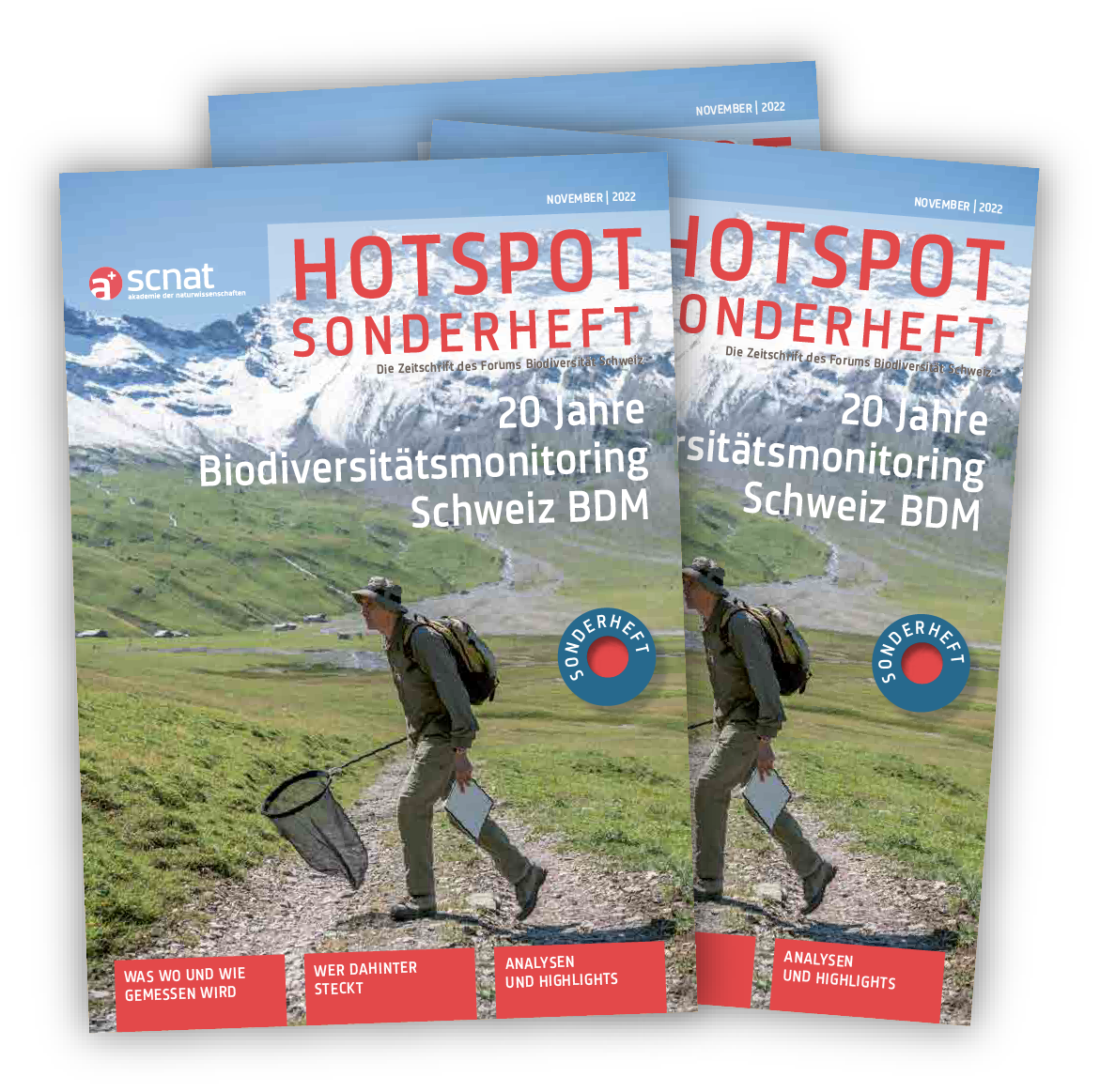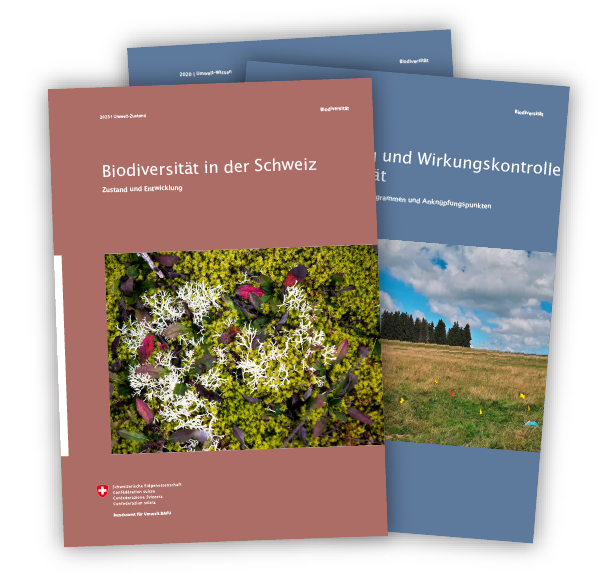Purpose and objectives
Biodiversity Monitoring Switzerland surveys the long-term development of species diversity in select plant and animal species. By keeping an eye on common and widespread species, BDM focuses on trends and developments in Switzerland’s normal landscape. Inspired by Swiss Range Statistics and the Swiss National Forest Inventory, BDM chose a systematic sampling grid consisting of three distinct nationwide networks.
Together with other environmental information, BDM data forms an important basis for nature conservation policy and for other policy areas that have a major impact on biodiversity, such as agriculture and forestry.

Contribution and special features
- BDM compiles species lists that are as complete as possible for all survey areas. This means that the disappearance of species can also be detected with a high degree of probability.
- BDM field staff not only visit well-known biodiversity hotspots or sites where rarities are found, but also randomly visit places that would otherwise be unlikely to be surveyed.
- BDM surveys common and widespread species that are not normally recorded by biologists.
- Repeated surveys at exactly the same location using exactly the same method allow precise statements to be made about changes in species diversity.
Further programs
In Switzerland, a number of other programs also provide information on biodiversity in our country:
- The programme Agricultural Species and Habitats ALL-EMA.
- Monitoring Breeding Birds.
- Monitoring the Effectiveness of Habitat Conservation in Switzerland focusses on the development of biotopes of national importance.
- The National Surface Water Quality Monitoring Programme NAWA analyses in particular the biological diversity in watercourses.
- The development of rare species is also recorded using the periodically revised Red Lists.
- Additional information is provided by the Site Statistics and the National Forest Inventory.
An overview of all federal biodiversity monitoring programmes can be found on the website of the Federal Office for the Environment (FOEN).
Cantonal programs
In the cantons of Aargau, Thurgau, Graubünden, Lucern, St.Gallen, Appenzell Innerrhoden/Ausserrhoden, supplementary surveys are being carried out via one of BDM's monitoring networks. The sample is condensed in such a way that meaningful results are obtained for the project area in question. The cantonal programs are coordinated by BDM Switzerland.
BDM findings

BDM contributes to improving knowledge about biodiversity. Its data is requested by numerous stakeholders. We have put together some examples of how BDM's findings are used.


